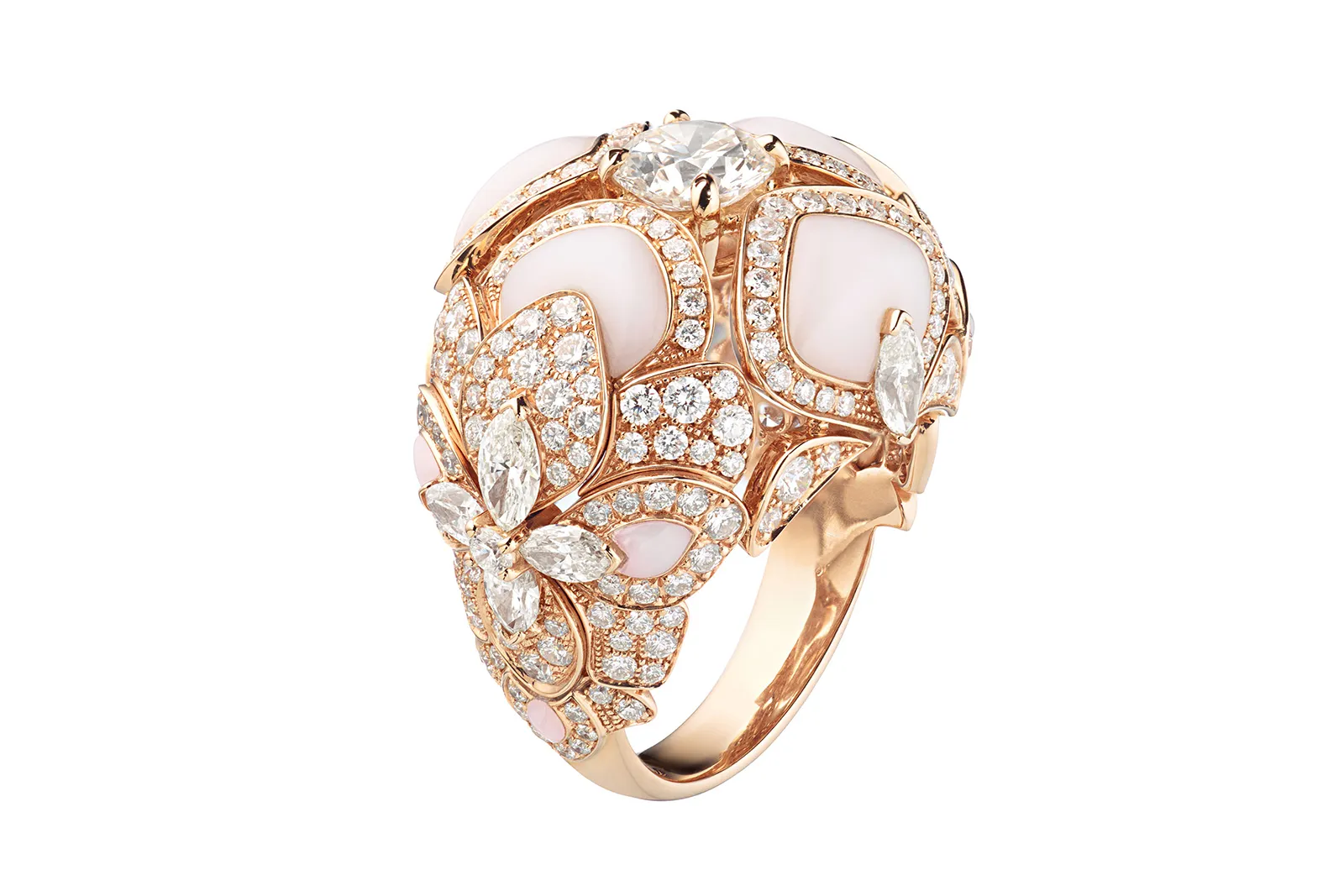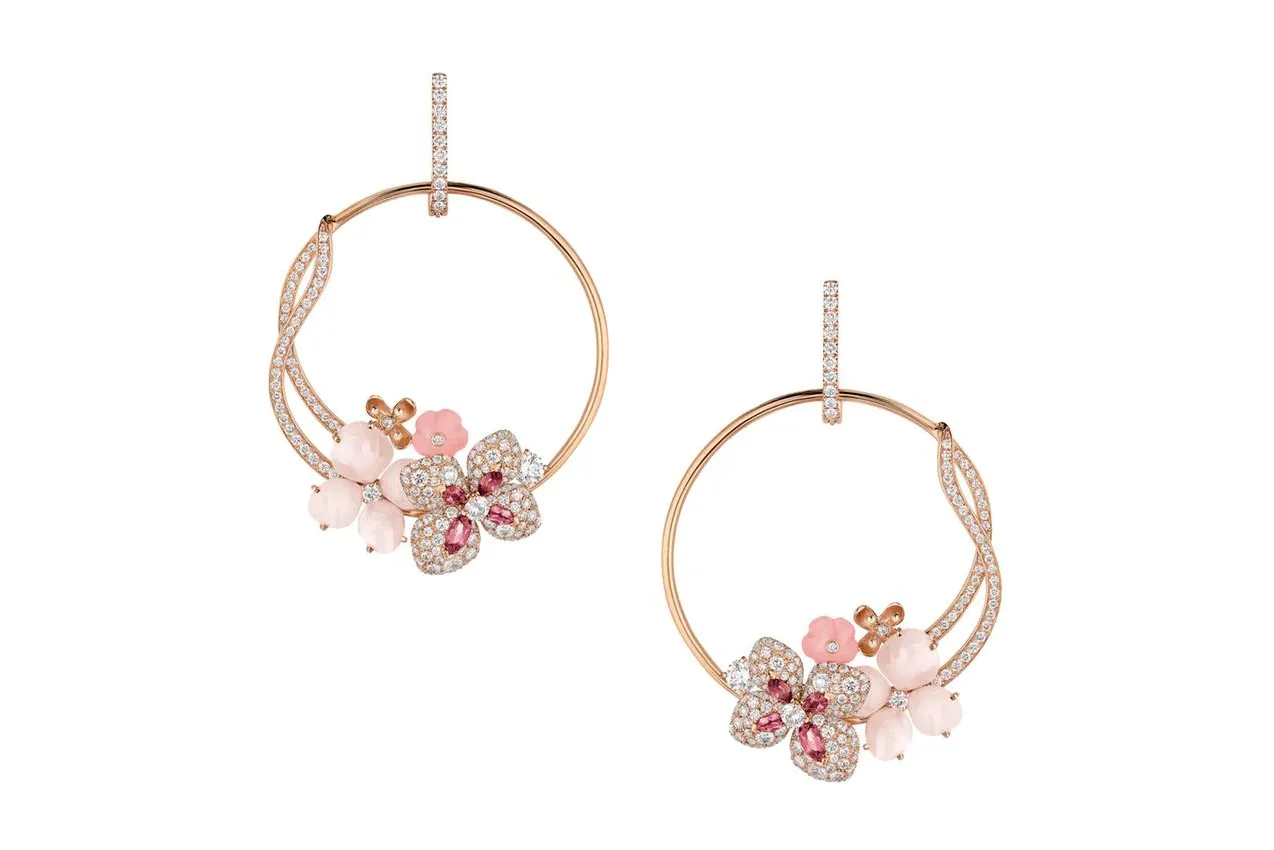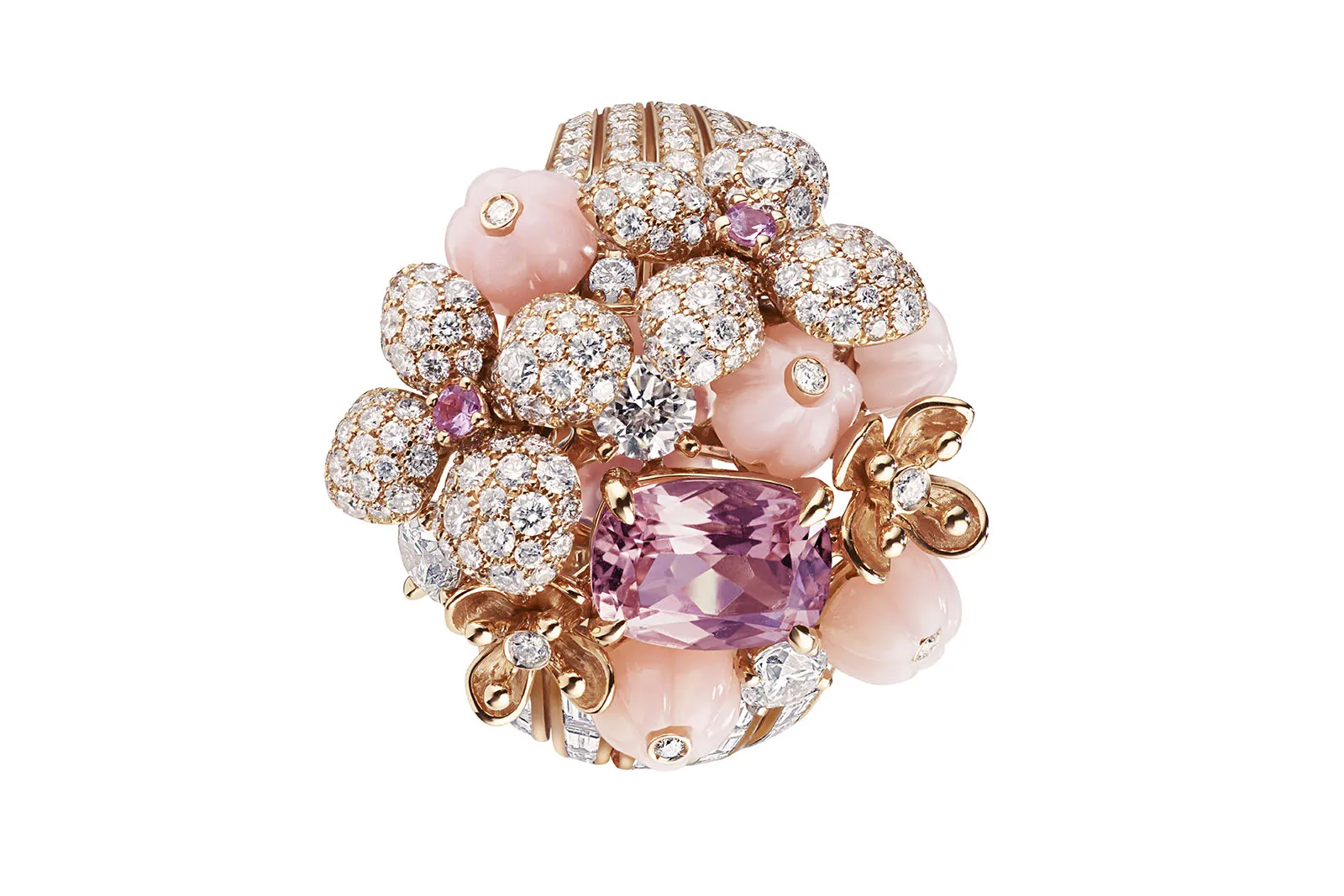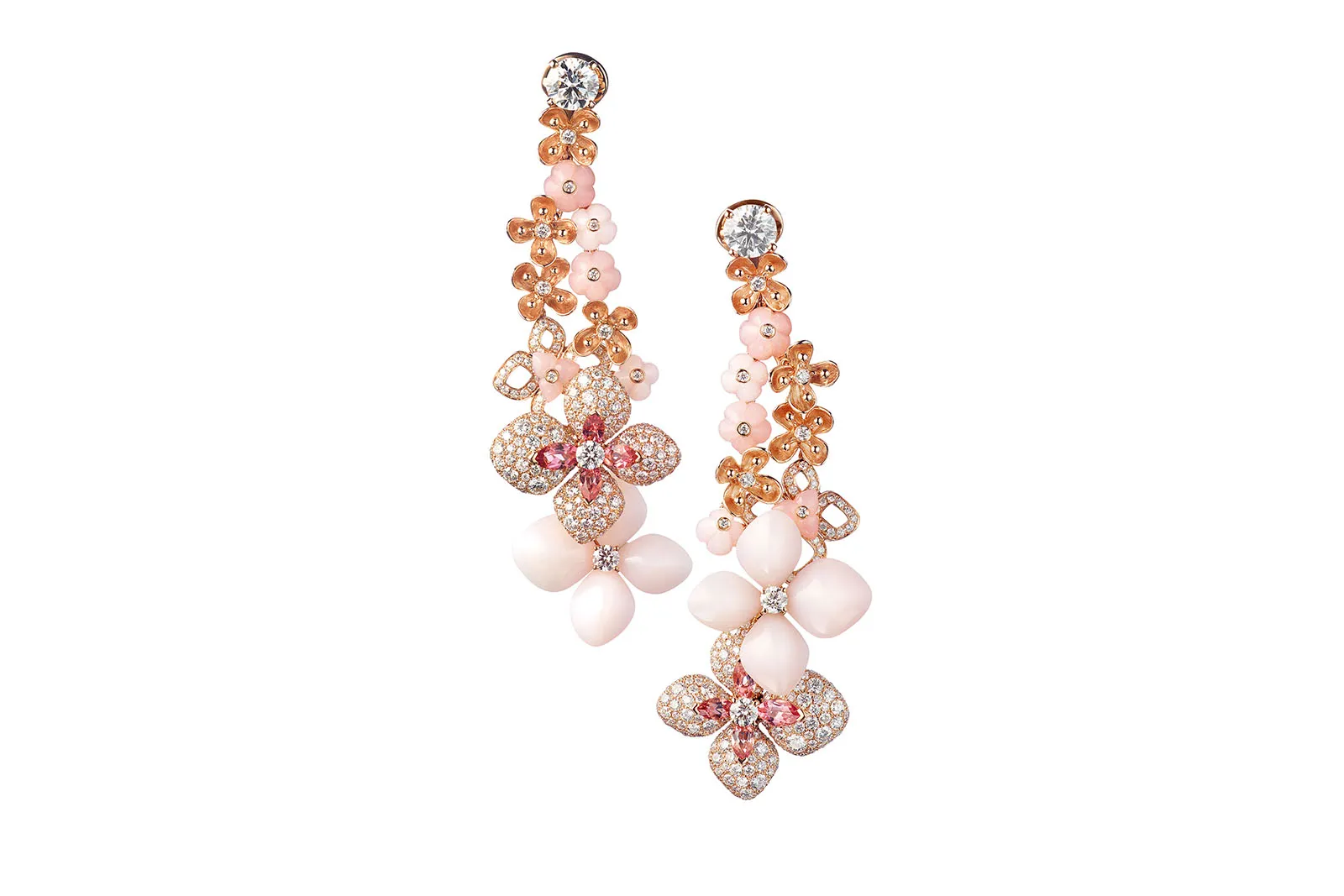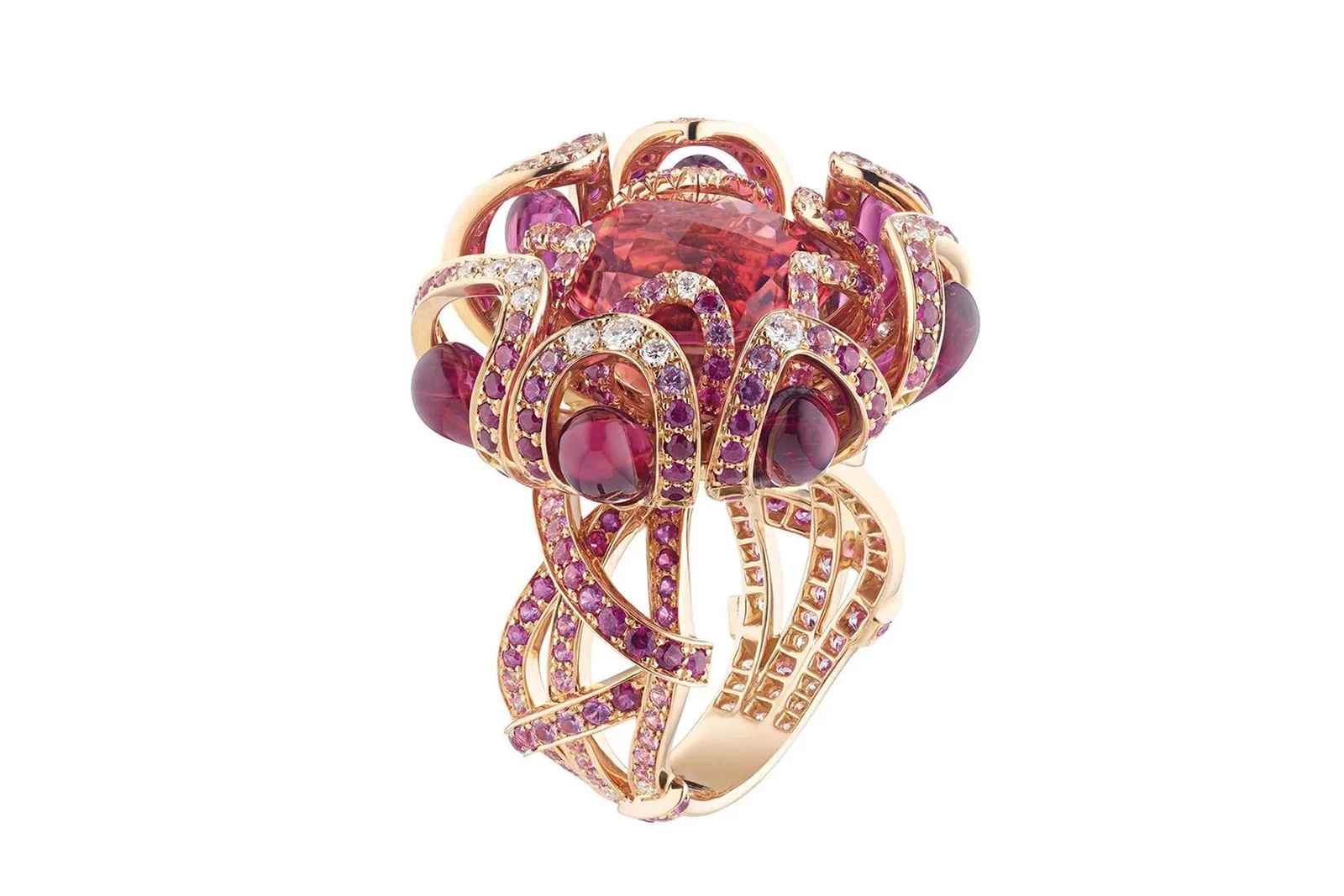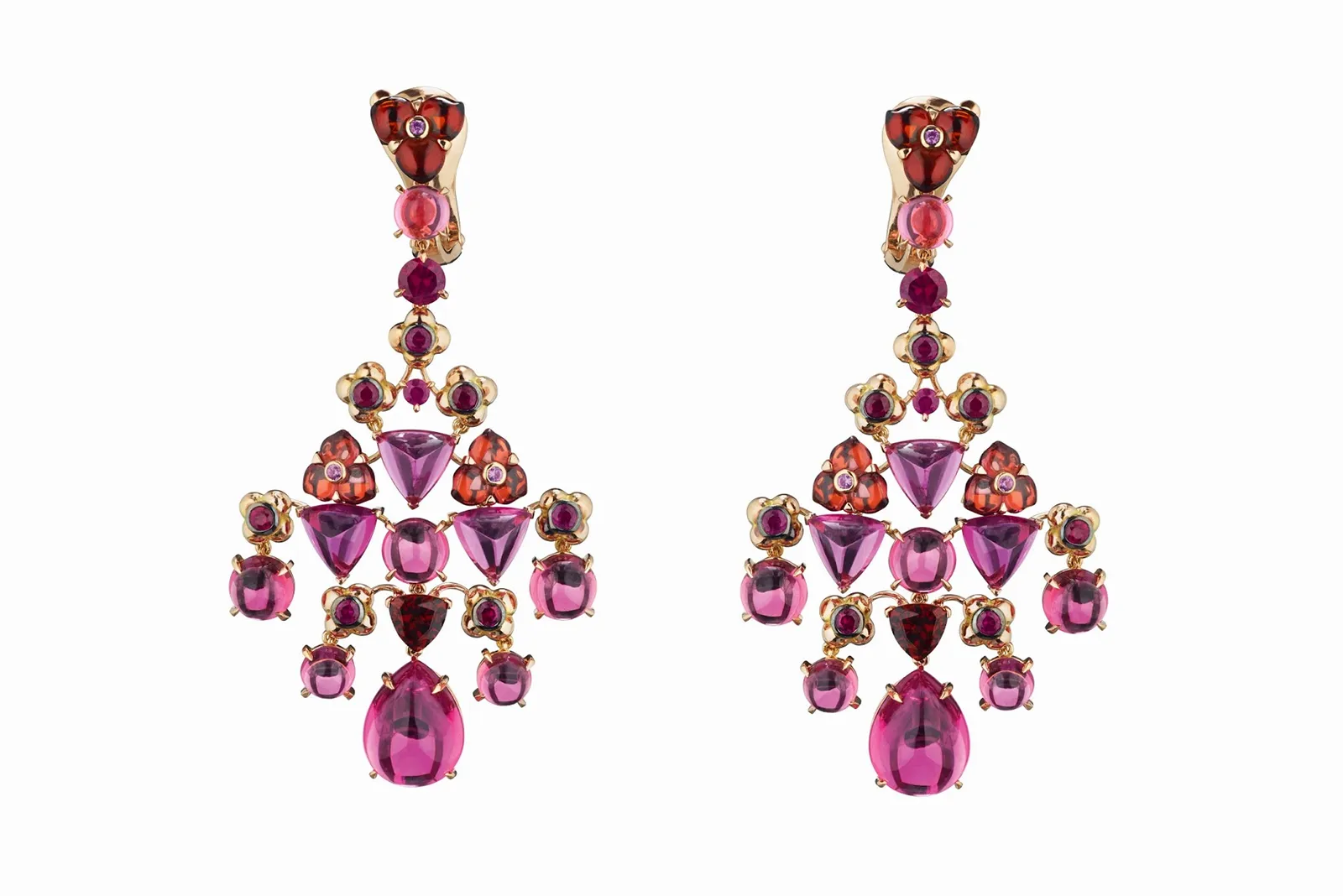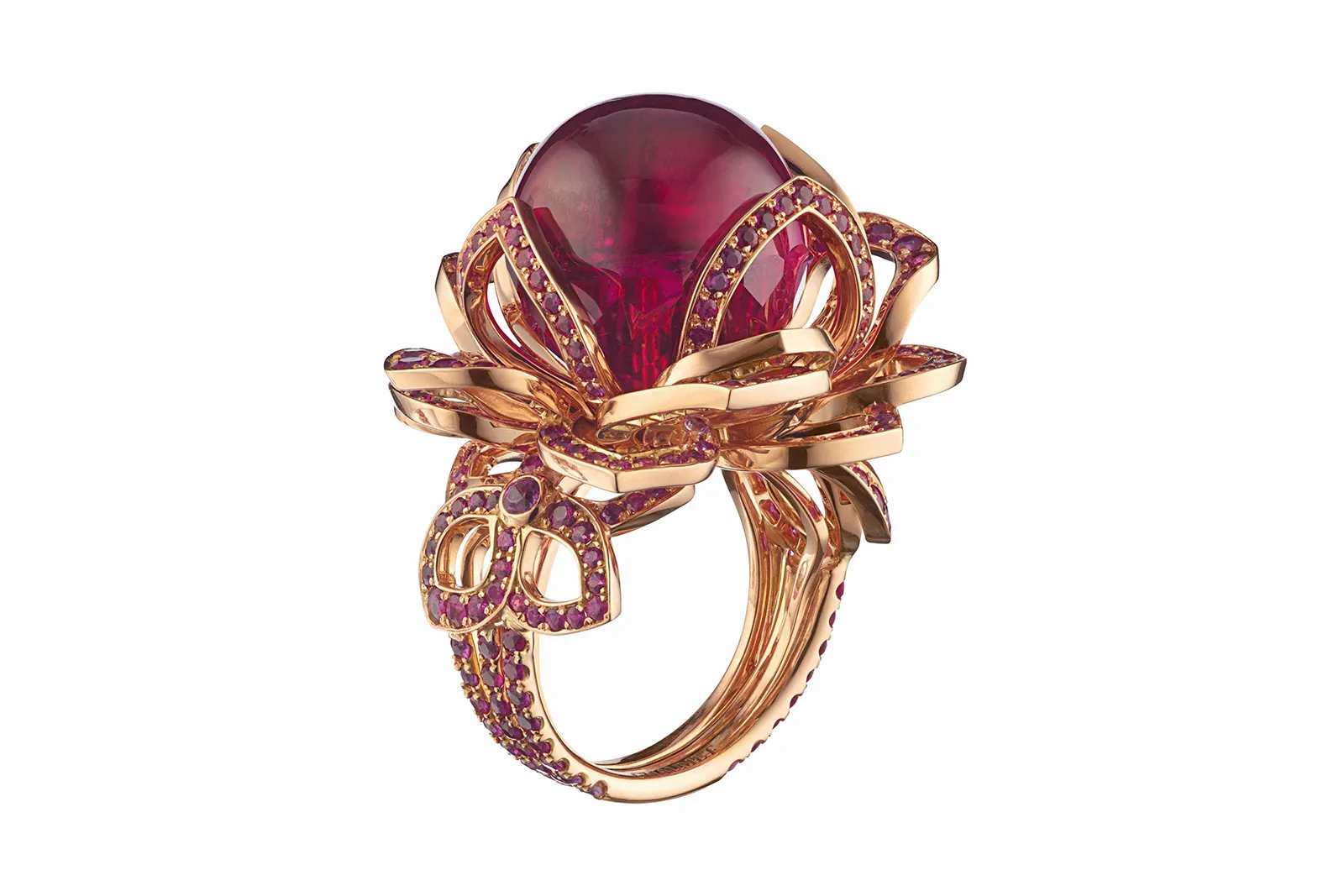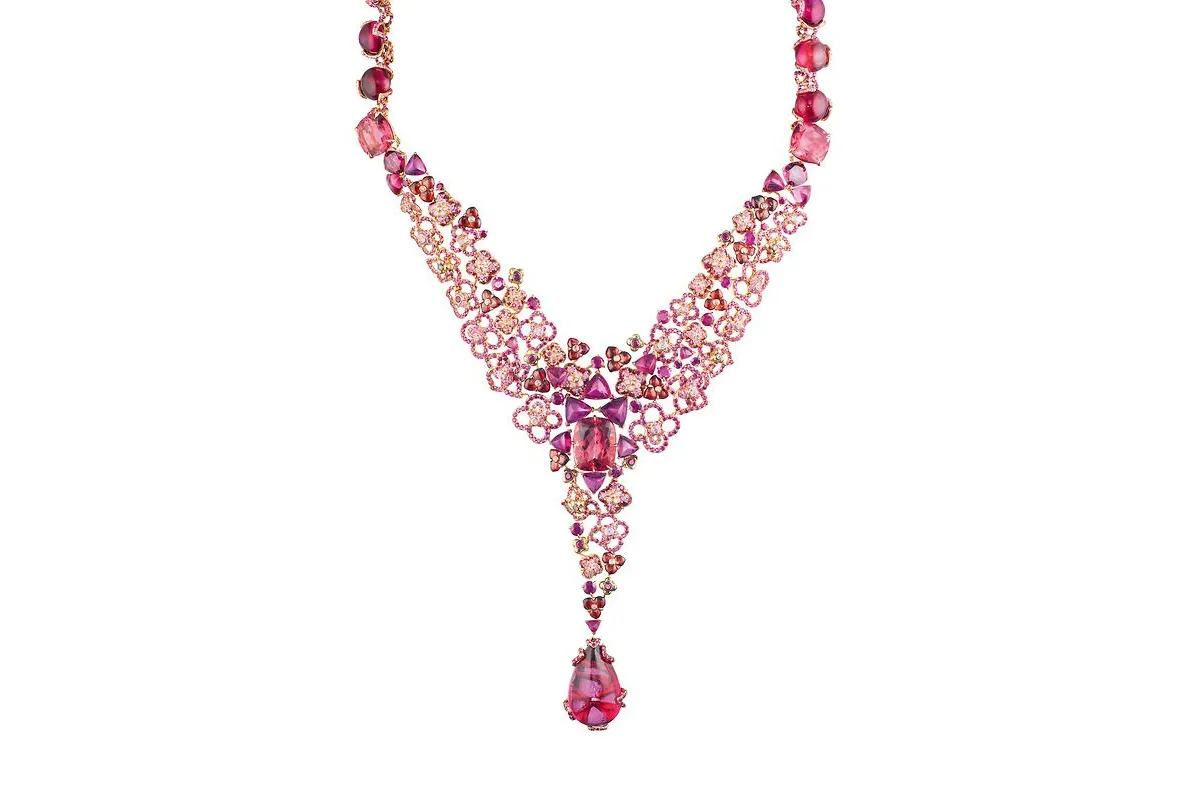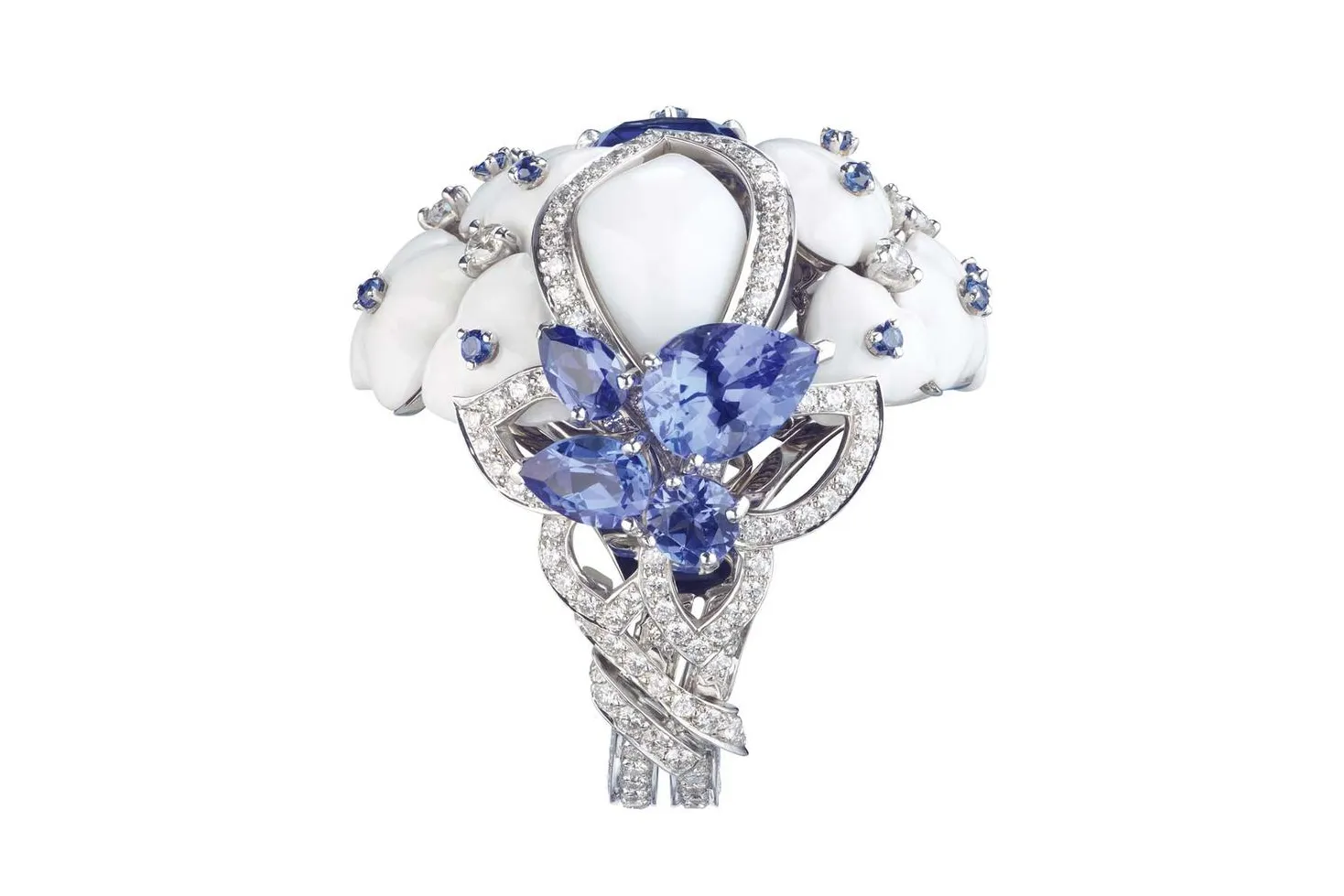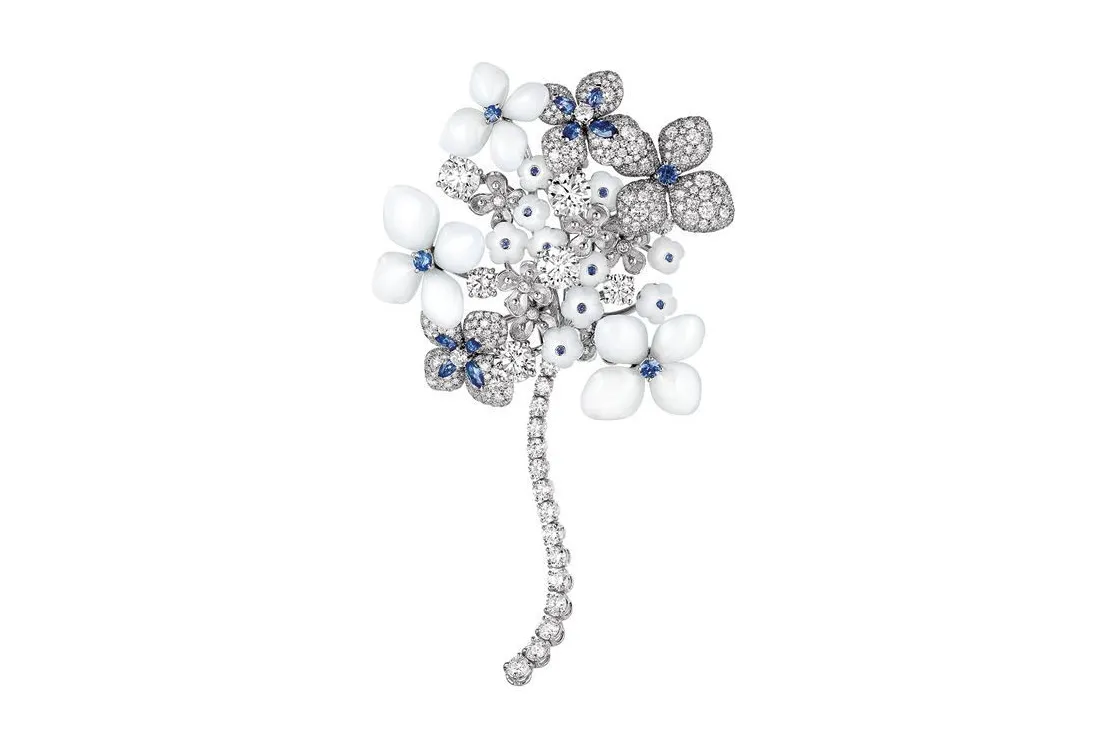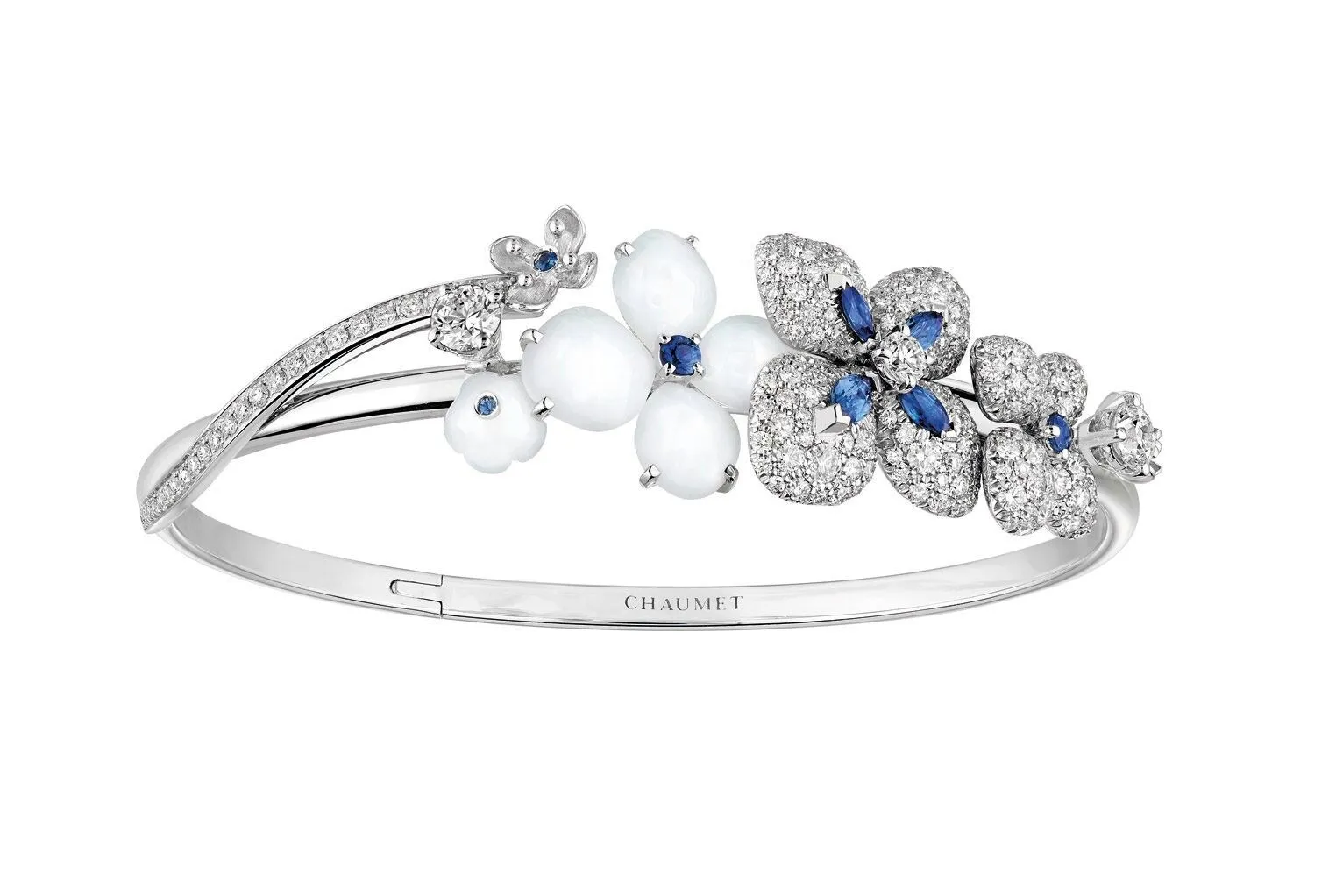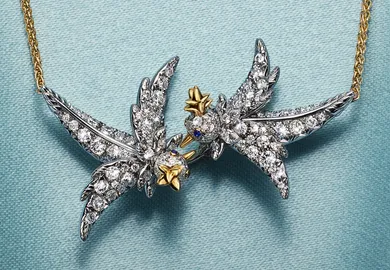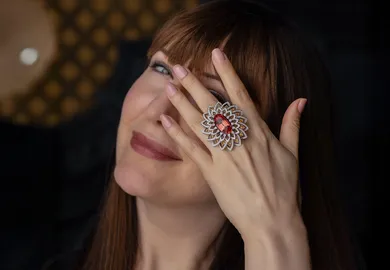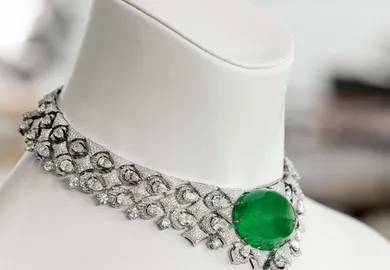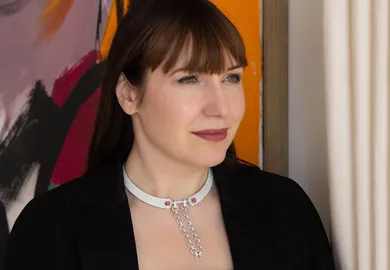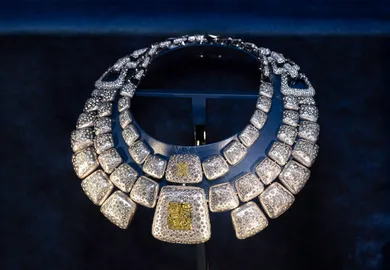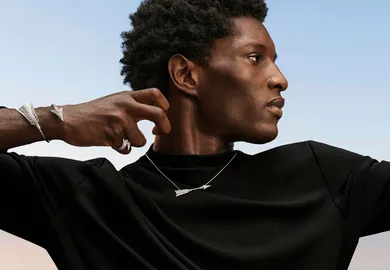
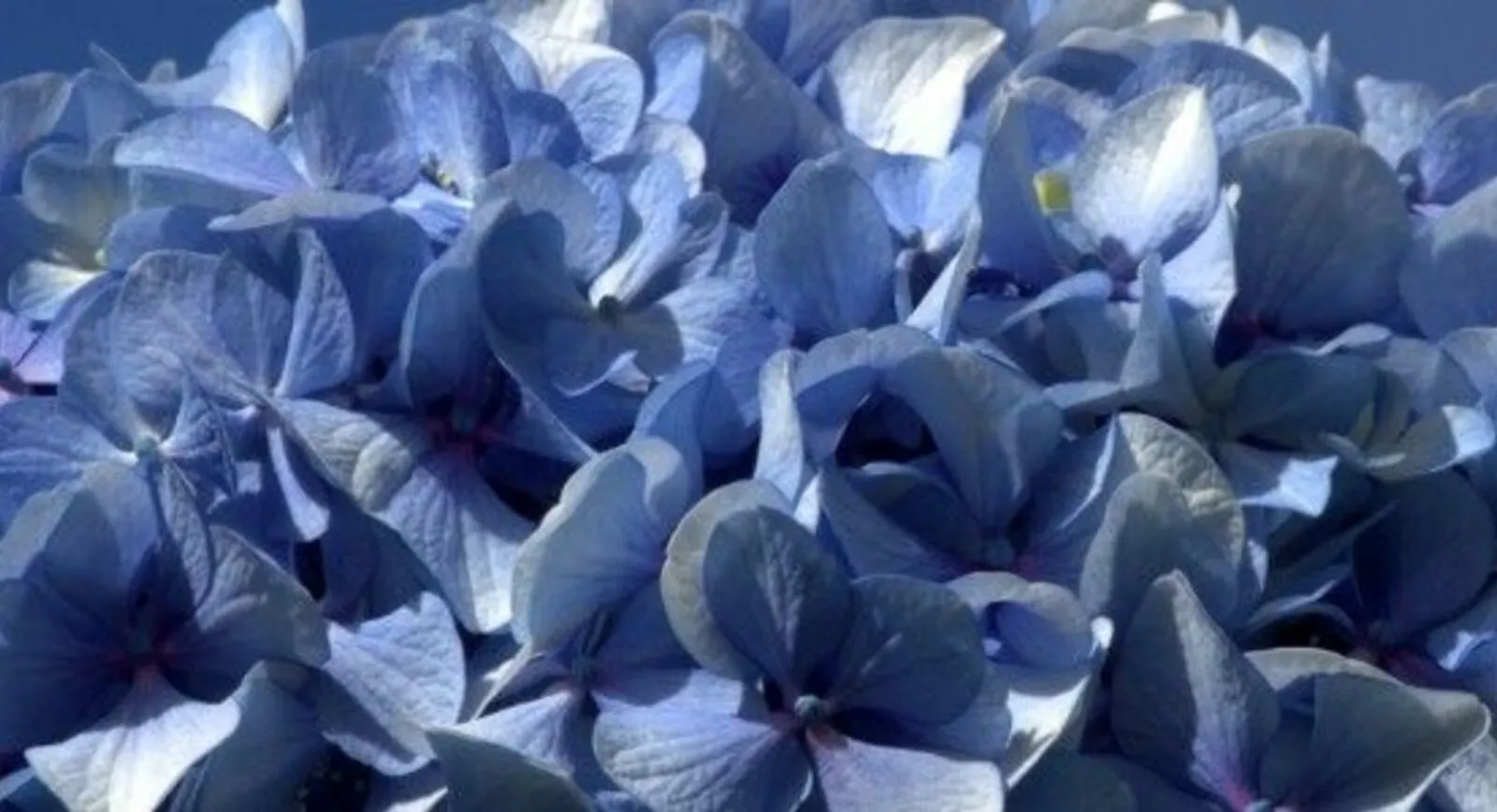
Chaumet: Hortensia “Tells” The Extraordinary Stories Of The Past
At first glance, the hortensia (or hydrangea) looks a simple flower. Yet, like every plant, within it is concealed a certain charm. The delicate clusters of miniature flower heads and the petals that differ from each other in size and shape form an extravagant spherical composition. Their colour and number of petals depends on the country they originate from. Wherever it grows, the flower looks like an array of celebratory fireworks.
The hortensia owes its name to the daughter of Empress Joséphine: Hortense de Beauharnais. Like her mother, Hortense was one of the muses of the main jewellery houses of the time: Chaumet. Over the course of the brand’s 233 year history, a large number of pieces have been created, many as part of a flower – themed collection, but nothing like the current flower collection has ever been seen at Chaumet before.

Chaumet Hortensia collection
So as not to fall behind other famous boutiques, Chaumet recently debuted this High Jewellery collection and branded it “Hortensia”. Every piece was fashioned under the supervision of the company’s new creative director Claire Dévé-Rakoff. Earrings with sapphires and diamonds, a ring with a large juicy red tourmaline stone, a sautoir with pink opals which can serve as both a necklace and a bracelet – none of these could leave customers, the press or even the most exacting of jewellery experts feeling indifferent towards the collection.
The inspiration and ideas for creating this ensemble of fine jewellery pieces were, as one might have expected, drawn from the rich archives and extensive history of this old and experienced French company. The 24 pieces in the collection are divided into three colour groups which are used by Dévé-Rakoff to narrate the three most important stages of Hortense de Beauharnais’ life. Blossom (or germination) tells of Hortense’s early marriage to Napoleon Bonaparte’s brother, Louis Bonaparte. In order to personify the tenderness and innocence of the young bride, diamonds are used as the stones which symbolise chastity whilst the white and pink opals are symbols of good luck. As a final touch, pink sapphires are added to suggest the stirrings of a budding romance.
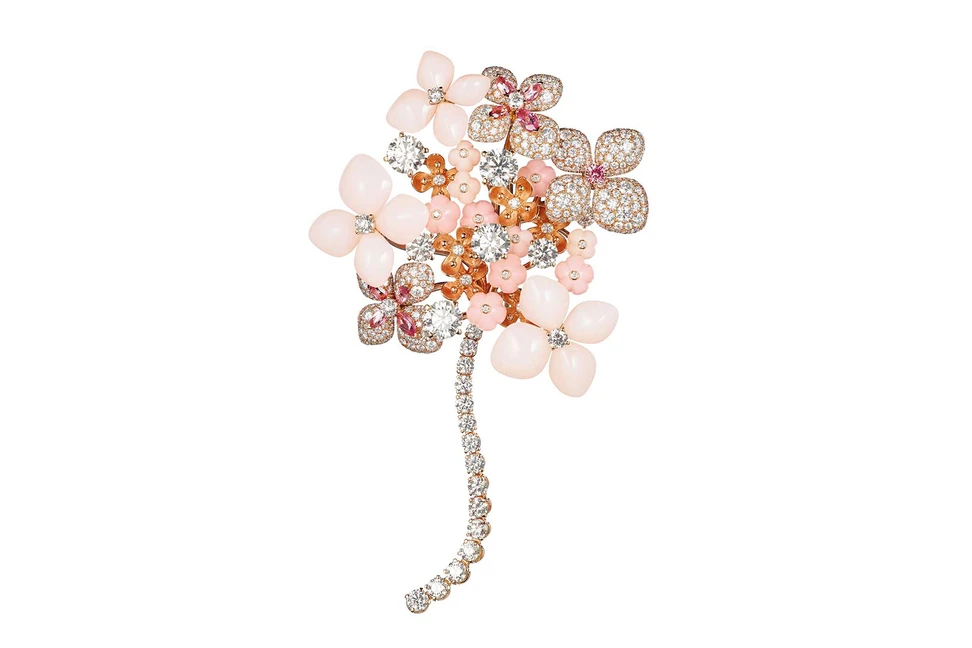
Chaumet Hortensia collection
The second, very red-coloured part of the collection is a reflection of Hortense’s sensitivity and lively emotions. She very much respected her patron, Tsar Alexander I, whom she genuinely admired. The language of these flowers manages to communicate all the feelings of a young lady: the pink tourmaline implies trust and loyalty; the ruby – tender love; the red tourmaline – peace.
The last and most extensive part of the collection comprises blue and white tones, reflecting Hortense’s desperate love for General Flahaut de la Billarderie. The dark blues were not selected by chance. In fact, the violet blue stones have a particular meaning: tanzanite symbolises fortune; lapis lazuli – power and strength; sapphire – protection.
So it seems Chaumet has done it again by skilfully uniting beauty and history in its stunning creations which not only manage to beautify the wearer but also to tell the extraordinary stories of the past.

WORDS
Katerina Perez is a jewellery insider, journalist and brand consultant with more than 15 years’ experience in the jewellery sector. Paris-based, Katerina has worked as a freelance journalist and content editor since 2011, writing articles for international publications. To share her jewellery knowledge and expertise, Katerina founded this website and launched her @katerina_perez Instagram in 2013.
